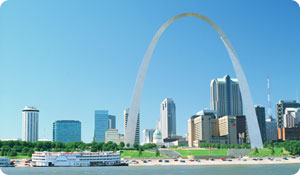
Most depressed, saddest, or worst city in the country-labels that any city hardly covets; however, each year, numerous surveys and studies cast an unwanted spotlight on cities with the worst standards of living.
Depending on which data you rely on and the focus of the reporting agency, the cities may vary. For instance, the U.S. Centers for Disease Control and Prevention and their Behavioral Risk Factor Surveillance System will reveal different information to FBI crime reports, air quality and housing reports, or data from the U.S. Census Bureau.
Even the most comprehensive reports have their critics, largely due to how the raw data is used or interpreted by the media. Regardless, due to their poor ranking on factors including economic indicators, crime and health statistics, and other quality of life indicators such as suicide rates and pollution, several cities stand out
As the country slides into a recession described as the worst since the Great Depression, and thousands more people stand to lose their jobs, there's another index that plays a role: the Misery Index. Created by economist Arthur Okun, this economic indicator adds the inflation rate to the unemployment rate. The theory is that the two combined creates profound economic and social costs for a country.
So how does a city qualify as depressing? Well, first, we considered the National Institute of Mental Health's stated environmental causes of depression. They include trauma, loss of a loved one, a difficult relationship, or any stressful situation-this could include financial problems, poor health, natural disasters, unemployment, or being the victim of a crime.
For this list of most depressing cities we used data from several sources, including the CDC, the U.S. Census Bureau, state and federal crime statistics, and the Misery Index. It also weighs information from Bert Sperling, an authority on city rankings and founder of Sperling's Best Places. His research includes crime statistics, health patterns and trends, and several other factors. (The cities here appear in no particular order.)
St. Louis, MO
The mid-west city ranks poorly on several indicators. According to the U.S. Census Bureau, among large cities it ranks in the top six for poverty. It also has one of the highest crime rates and has been labeled one of the 10 most dangerous cities to live in.
New Orleans
Still recovering from the aftermath of Katrina, the Big Easy has a high violent crime and unemployment rates, and significant numbers of suicides and divorces. On Sperling's list it ranks as the third most stressful city to live in. Also, in the first comprehensive national health survey of major American cities conducted by Centrum, New Orleans was ranked America's most unhealthy city.
Detroit
The motor city follows behind St. Louis as the second most dangerous city to live. Suffering economically from the decline of the auto industry, the city has the second highest unemployment rate in the country, subsequently, high levels of poverty. It also ranks in the top five for fattest cities, with 62 per cent of the population overweight or obese.
Flint, MI
Flint's economy has been crushed by the failed auto industry. With soaring unemployment and crime rates this city is the second poorest in the country. Along with cancer and cardiac death rates higher than any other other region in the U.S., it also has one of the highest smoking rates and scores poorly on the air quality index.
Cleveland
While this city ranks relatively well in some health categories - such as low hypertension and arthritis rates - it doesn't measure up in other categories. Clevelanders have some of the worst BMI scores compared to the general population, and it is the poorest city in the country. Its crime rate is also higher than the national average.
Stockton, CA
Stockton is reeling from the housing crash and has one of the highest foreclosure rates in the country. It also has the highest violent crime rates in the state of California, which some criminologists link to the high level of unemployment and drug use, and large number of gangs.
Philadelphia
The City of Brotherly love's crime rate is at its highest in over 20 years. Officials cite factors such as one of the highest levels of poverty in the country and the overwhelming amount of illegal weapons. The city is also plagued by several toxic waste sites. In the American Lung Association's State of the Air report it came in at 13th spot for the worst ozone pollution in major cities.
Los Angeles
Not surprisingly L.A. pulled in top spot as the metro area with the worst year-round ozone pollution, and particle pollution, or soot. Residents also endure one the worst commute times in the country, high taxes, and Superfund sites, which are the country's most toxic waste sites. On a high note, the city's crime rate continues to decline.
New York
The good news is the Big Apple is one of the safest large cities to live in. The bad news is that it's one of the most expensive cities to live in and ranked fourth on the Misery Index. Housing costs are exorbitant, income taxes are higher than the national average, and it has one of the worst commuting times in the country.
Las Vegas
The gambling mecca has been one of the cities hardest hit by the housing crash. Home prices have fallen by 52 per cent. Tourism has dropped dramatically, with the airport suffering its biggest passenger decline since the early 80s. It ranks number four on Sperling's list of most stressful cities to live, has one of the highest suicide rates in the country, high alcohol consumption levels, and poor physical activity levels.





